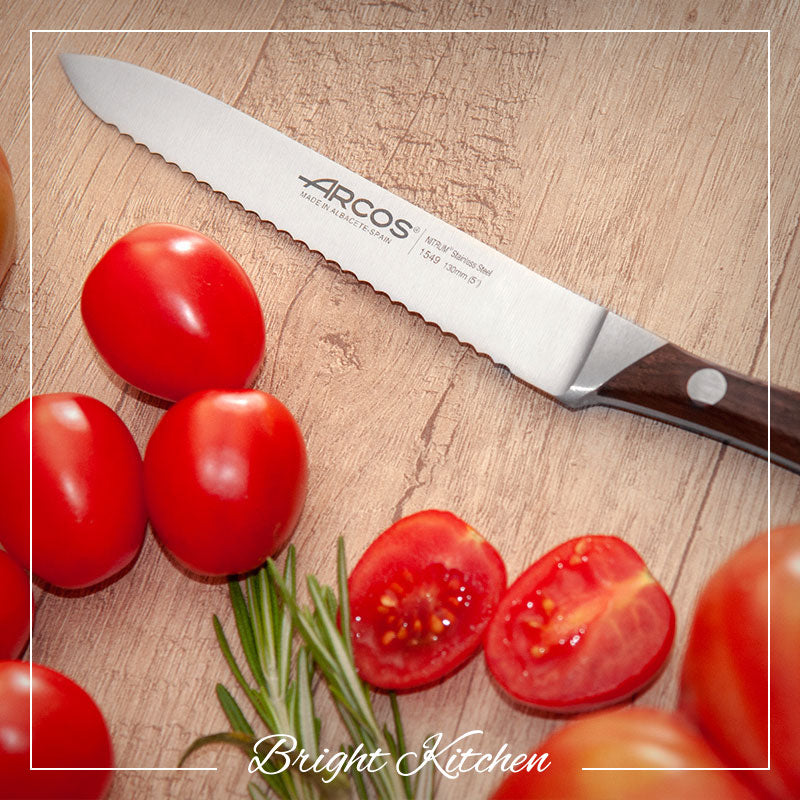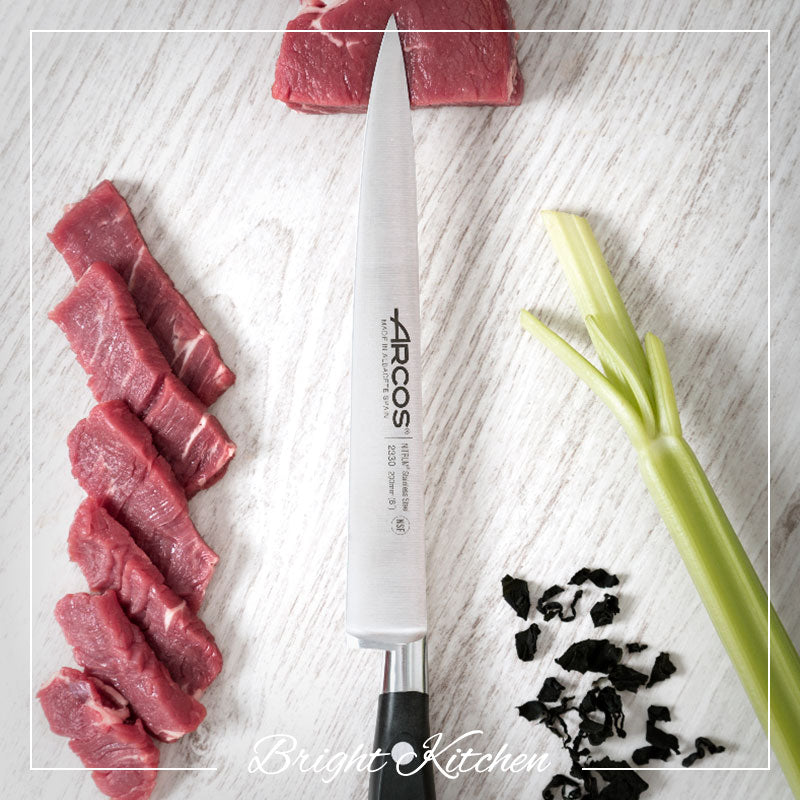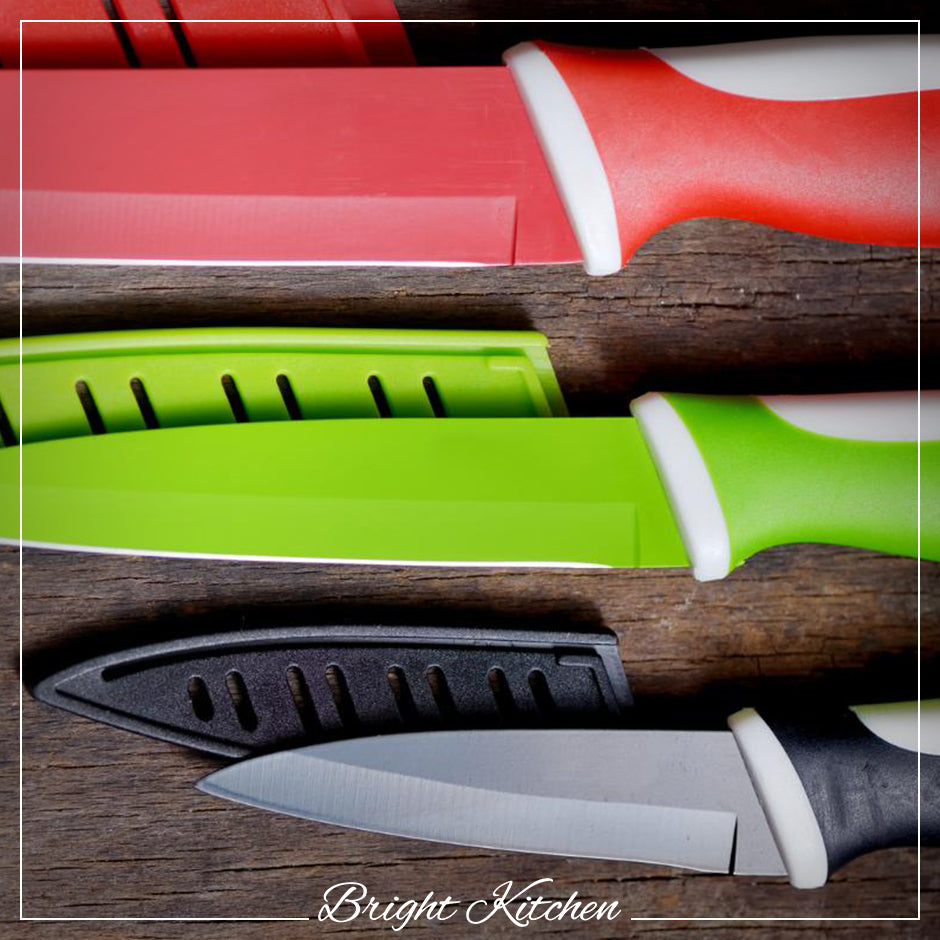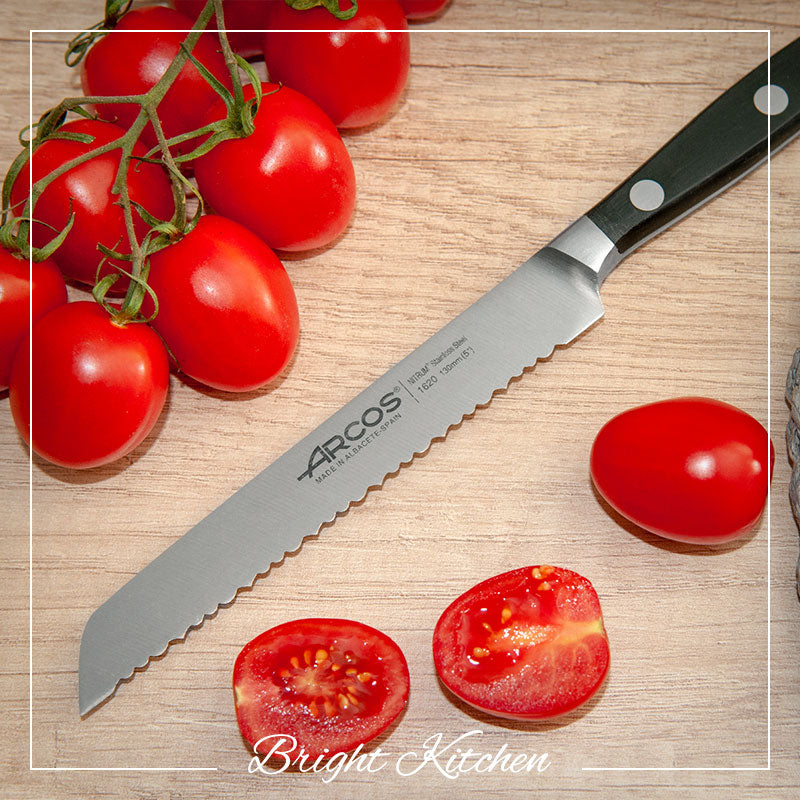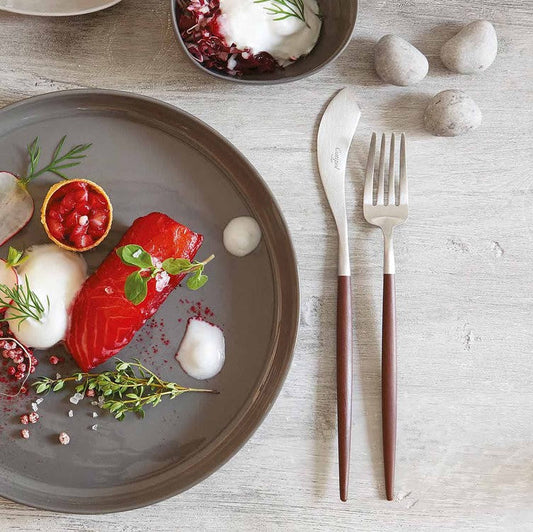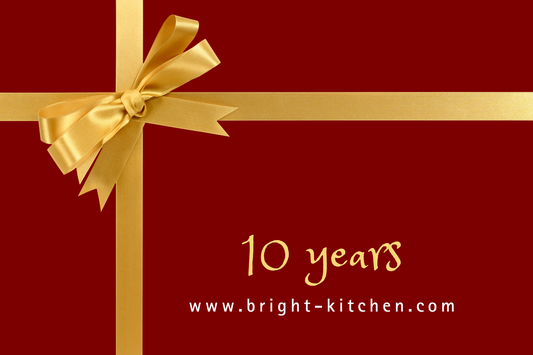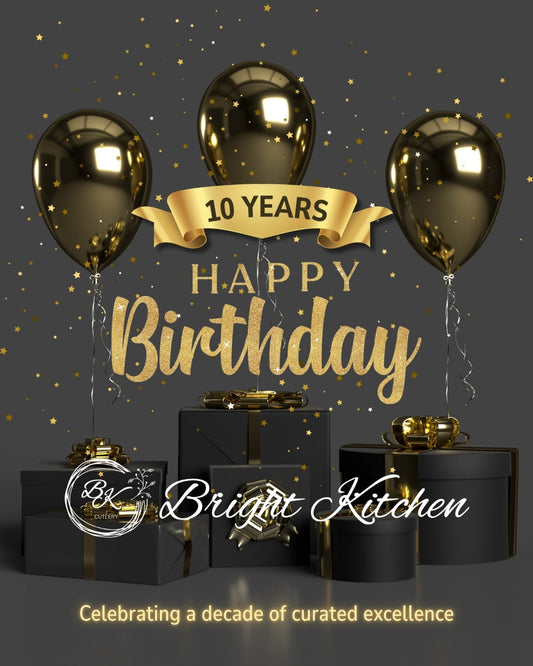The most important tool for any kitchen task is a knife. The best kitchen knives are ones that promise good preservation of cutting power, good material durability, and ergonomic comfort throughout extended working hours.
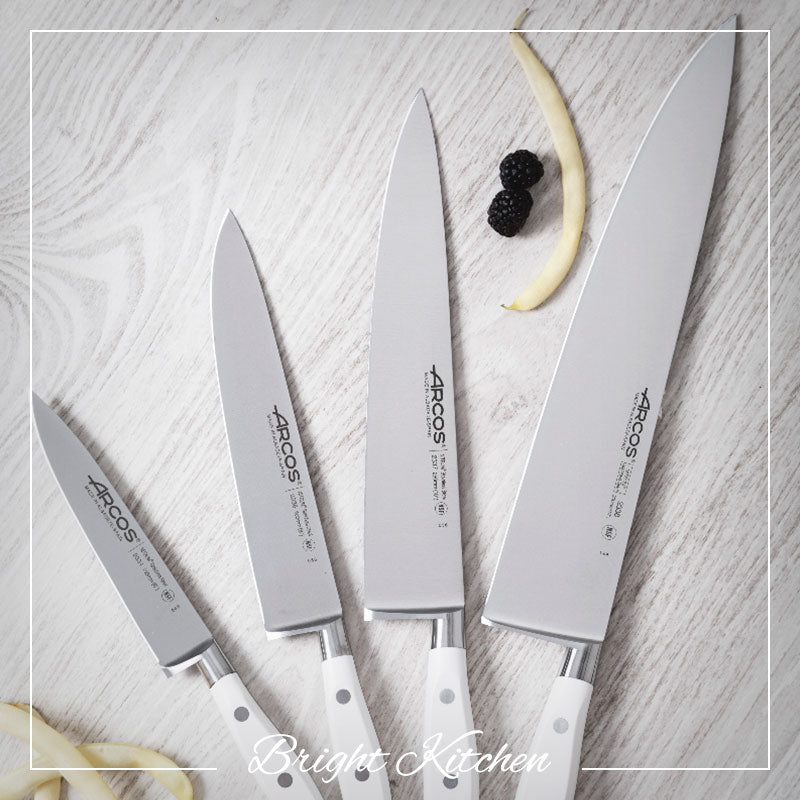
To help you understand how to select kitchen knives, the ones that will be your ideal allies in preparing your dishes, we'll go over a few specifics for each knife that is intended for professional use.
Models and Features
Chef Knife
The chef's knife is the ideal kitchen tool for someone who needs flexibility to regularly cook a wide range of dishes. The chef's knife is the best option if you want to invest in a knife because it has the right design for chopping, slicing, and cutting both hard and soft meals, and its body is typically between 15 and 30 centimeters.
Santoku Knife
The Santoku knife, which has its origins in Japan, is a multipurpose tool. Santoku, which is Japanese means "three virtues" or "three uses," refers to the three jobs that this knife excels at: slicing, chopping, and cutting. It differs from a chef's knife because it's smaller, lighter, thinner, and made of a more durable material. As a result, they need to be sharpened less frequently. When preparing oriental dishes, this knife is frequently used to cut vegetables and seafood.
Bread Knife
Knives with a serrated edge are the ideal bread knives because they can slice through bread without crushing it. Due of the bread's soft center, this model evenly slices the crust, which keeps the bread from kneading. The popular serrated knife in this variant features a broader, serrated blade. It frequently ranks third among kitchen knives in terms of usage.
Serrated Knife
The serrated knife, if available in a smaller size, can be very helpful for many different vegetables and fruits that are hard to cut by a non-saw choice in addition to the specific model for bread. It guarantees the essential cutting precision in these circumstances.
Vegetable Knife
The vegetable knife is used to remove seeds, cut off unnecessary parts, and peel vegetables. The smaller size of the knife makes it easier to precisely cut or mince greens and other vegetables. The vegetable knife has a blade that is typically 9 to 10 centimeters in length, has a sharp blade, and may be used to make any kind of extremely fine cuts.
Barbecue Knife
Barbecue Knives are typically between 20 and 30 centimeters in length (small pieces limit handling of the barbecue meat), have wooden handles, and a stainless steel blade when used for this type of preparation.
Meat Knife
Meat Knives are used daily for cutting meat, as their name suggests. It is suitable for cutting raw, roasted, or cooked meats and typically ranges in size from 15 to 25 centimeters. It has a rigid blade and curved edge.
Filleting Knife
The best blade for precisely and adaptably filleting fish pieces is one that is large, curved, flexible, and narrow. Its blade must always be sharp.
Boning Knife
Boning Knives are great for separating meat from bones and removing fat, and they can also help in obtaining more accurate cuts of fish and chicken. A narrow, curved blade makes this kind of knife perfect for more delicate cuts, such those needed for cutting around bone.
Cleaver
The cleaver is a versatile tool that, like the chef's knife, can occasionally take the place of other knives. Although its primary use is to cut through hard meat and bones, it can also be an effective tool for slicing herbs, vegetables, and some fruits. This knife is more strong and durable than the others, making it perfect for breaking and separating bones of sheep, cattle, and chickens.
Blade Material
Each knife has the same, extremely basic design that hasn't changed in thousands of years: a blade that's attached to a handle. Yet, the knife's material choice affects how easily it can be sharpened, how well it resists oxidation, how long it will last, and how effectively it cuts.
For the knife that effectively cut and slice food fast and safely, it must have a good blade. There are a few material choices that can guarantee security, balance in the perfect cut, and a good edge. We'll go over these possibilities below.
Stainless Steel Blade
The majority of knives made today, especially those for domestic kitchens, are made of this material. Stainless steel resists water and humidity effectively and does not rust. If the handle is also of high quality, the knife won't require much care and will last a lifetime.
Carbon Steel Blade
These blades have carbon added to the steel, which makes them easier to sharpen than knives made of stainless steel and keeps them sharper for longer.
Chefs and cooks prefer carbon steel knives because they are extremely durable and prevent the material from breaking easily due to their precise cutting.
The carbon steel knife's disadvantage is that it needs maintenance. It is particularly vulnerable to oxidation and easily gets stained. After use, it must be washed and dried right away. Furthermore, many chefs suggest applying mineral oil to lubricate the carbon steel knife.
Ceramic Blade
It is a thin, incredibly sharp knife that maintains its sharpness for a long time. This type of blade's outstanding features include its exceptional cutting ability and the fact that the ceramic does not chemically react with food, ensuring that the flavor will not be changed.
The ceramic blade's disadvantages include its propensity to break easily, unable to be sharpened at home, and shorter lifespan when compared to stainless steel and carbon steel.
Damascus Steel Blade
The knife produced by this forging process is very resistant. The typical material used to make Japanese blades has a variety of chemical compositions. Damascus steel is typically a combination of two or more types of steel. The knife’s blade is given a distinctive design by the damascus steel, which also makes it highly attractive.
Handle Material
It's important to think about the type of knife handle in addition to the blade. An ergonomic handle can make handling and preparing your dishes more comfortable, and the way the knife fits in your hand affects the quality of the cut.
We'll talk over all the materials available to you so you can choose the best knife handle because the handle is the knife's weakest element and the component that degrades first over time.
Wooden Handle
Knives made with high-quality wooden handles are particularly comfortable to use. Wood is also a porous surface that is typically pre-treated. Hence, the growth of bacteria is not a concern. Even if the blade lasts a lifetime, the wooden handle can degrade with time, necessitating replacement even if the blade does.
Stainless Steel Handle
There are knives with handles made of stainless steel that are evenly weighted and last as long as the blade. The stainless steel handle's disadvantage is that it will easily slip in moist hands.

Plastic Handle
Plastic handles are common of simpler, more cheap knives. The weight is mostly balanced, although the cable has a propensity to degrade over time.
POM Handle (Polyoxymethylene)
It is a highly resilient and durable thermoplastic that goes by the names acetal, polyacetal, and polyformaldehyde. Due to the higher level of finish, this material should not be confused with knives that have plastic handles.
Micarta Handle
The micarta handle is a less common kind of cable. Micarta is a form of laminate manufactured from phenolic resin, cotton, and linen (material extracted from pine sap).
A material that is extremely resistant to blows, temperatures, humidity, and corrosion in general is manufactured using resin sheets and paper fabric that have been subjected to high pressure and temperature.
Due to the numerous mixable materials, it also has a very adaptable and unique design.
Other Handle Materials
Finally, there are additional, potentially high-quality materials used to make knife handles, such as silver, gold, deer horn, and even exotic woods and roots.
Sometimes found on table knives or highly unusual knives, this style of handle is uncommon in commercially made knives.
Conclusion
Typically, a knife set is sold together with a block, case or roll. Knife sets typically cost less than purchasing each item separately, which is a huge benefit.
Therefore, it is preferable to purchase high-quality knives as needed rather than spending excessive amounts of money on knife sets that have items you won't use in your kitchen.
Now that you are aware of some suggestions for choosing your best kitchen knives set with the necessary items you can visit our Online Store. You may find items in a variety of colors, materials, and styles that will guide you to the best choice!




